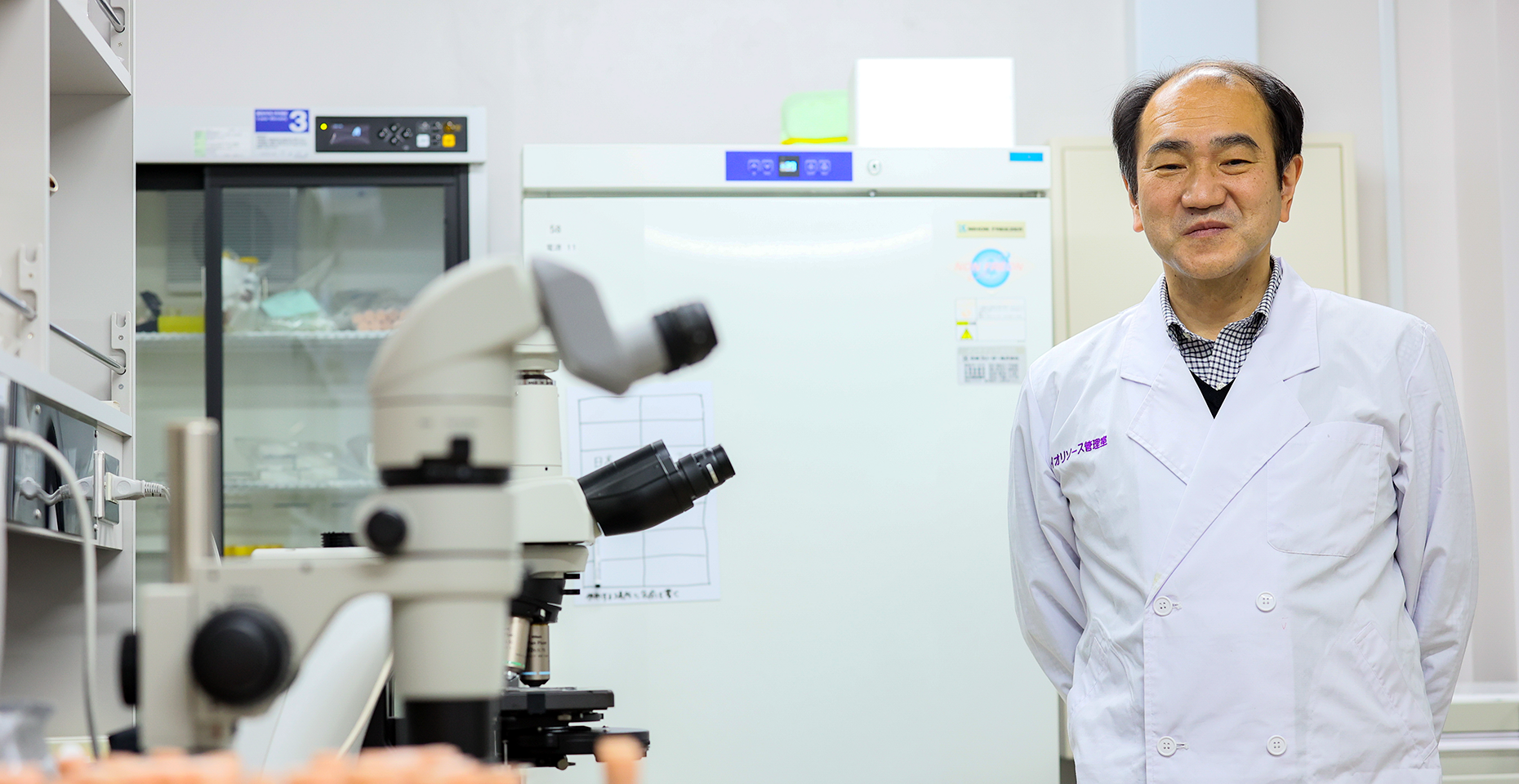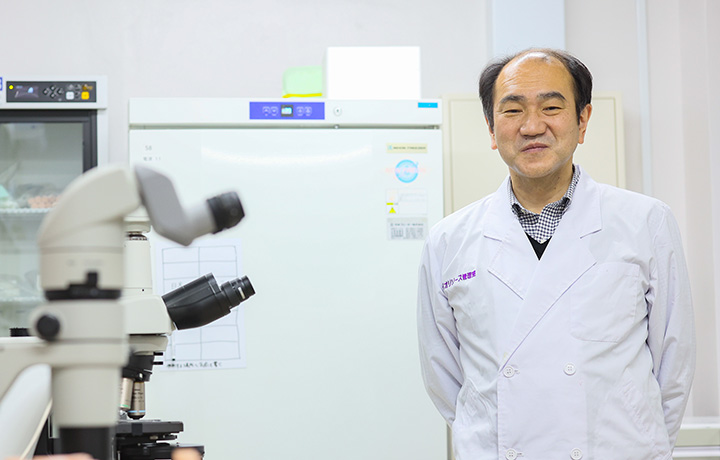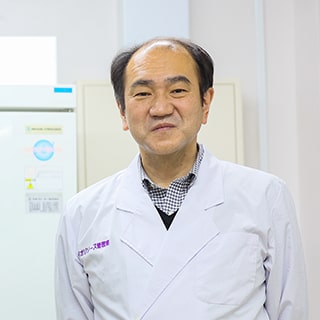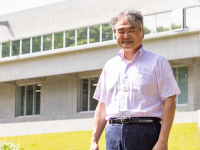Originally published on June 13, 2022, this article was subsequently updated on June 1, 2025, to reflect the latest available information.
Mold continues to grow if left unchecked during a period of high humidity. It is most commonly found in bathrooms, particularly during the rainy season. While mold is useful for various purposes such as medicine, fermentation, and other applications, it can also be harmful to human health if it becomes a pathogen. What types of molds should we watch out for in our everyday lives? We spoke with Associate Professor Takashi Yaguchi of Chiba University, who specializes in mold research at the University’s Medical Mycology Research Center (MMRC). The MMRC is the only public institution in Japan that focuses on researching pathogenic fungi. In this conversation, we covered everything from basic knowledge to mold control practices applicable to daily life.
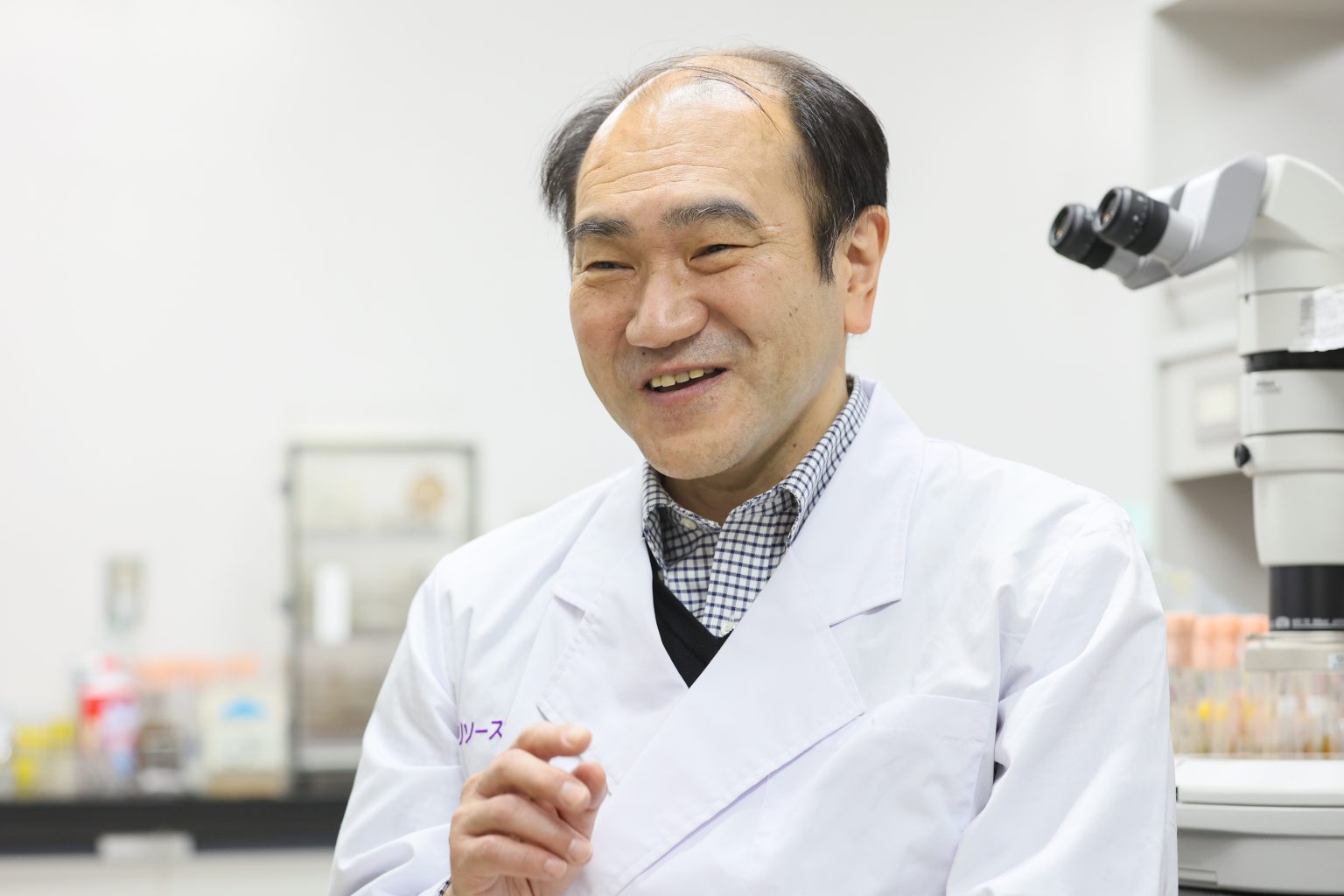
What is mold in the first place?
Living organisms can be divided into three categories: plants, animals, and microorganisms. Microorganisms, which are not visible to the naked eye, are classified into eukaryotes (fungi) and prokaryotes (bacteria). Eukaryotes are organisms whose cells contain a nucleus surrounded by a nuclear membrane, which contains genetic information. Prokaryotes, on the other hand, have no nuclear membrane; this category is comprised primarily of bacterial species. All animals and plants, including us humans, are eukaryotes. Molds are also eukaryotes. Among eukaryotic species, molds (filamentous fungi), yeasts, and mushrooms are collectively referred to as “fungi,” an academic term. In general, all of these are sometimes called “molds.”
What role does mold play in nature?
In nature, plants mainly play the role of “production” through photosynthesis, while animals do “consumption” by eating plants and animals, while microorganisms decompose them, returning their biomass to the soil. In other words, molds play a very important role in the “decomposition” process of the material cycle.
For example, athlete’s foot, which is said to affect approximately 20% of the Japanese population, is caused by the fungus called Trichophyton rubrum, which actually decomposes the hair and bones of dead animals.
While molds can have a negative effect on people, such as with athlete’s foot, they also play a positive role in the production of medicines such as penicillin or the fermentation of essential Japanese foods, including soy sauce and miso using koji, and yeast for bread dough and alcohol. Thus, microorganisms can be both beneficial as well as harmful to humans.
So, mold is an essential part of nature.
How does mold grow in houses?
Mold requires three conditions to grow: temperature, humidity, and nutrients. When these three conditions are optimally met, mold can grow literally anywhere. Specifically, mold tends to grow in temperatures between 20℃ and 30℃, with humidity over 60%, and with most organic materials serving as a source of nutrients. Mold thrives during the rainy season because these conditions are often met during this period. In the past, the mold growth season was limited because temperatures were cooler and drier in winter. However, as many households use heaters and humidifiers nowadays, the seasonal differences are becoming less significant.
So, mold now grows all year round.
What can we do to prevent it?
<Bathrooms>
Mold in the bathroom can cause black stains. A problematic mold that causes more harm than just stains is called Malassezia. When this mold comes into contact with the skin, it can cause seborrheic dermatitis and tinea versicolor, leading to symptoms like that of a heat rash. Since Malassezia likes skin oil, it is important to wash and dry your bathtub and towels thoroughly after each use. Therefore, you should dry towels outside as much as possible instead of leaving them in the bathroom. Additionally, water stains and soap scum found in bathrooms can also be a food source for mold, so it is important to remove these.
<Room interiors>
As it is difficult to keep the temperature in the room below 20℃ even to prevent mold growth, it is important to ventilate the room frequently. It is also essential to reduce humidity and remove dust that feeds mold. Other places where mold is likely to grow are the places the air is stagnant. For example, a shoe closet is a place you might bring soil from outdoors, and air barely circulates. Therefore, care must be taken. Bedrooms and closets, spaces that are often poorly ventilated, are also places where mold tends to grow.
<Futon/Bedding>
It is said that people sweat about a cupful of water each night; it is not recommended to store a damp futon or other bedding in a closet right after waking up. Ideally, it is best to air out the futon/bedding, but for those who have difficulty doing so, such as for hay fever, a futon dryer would be a good option. Special care should be taken in winter when moisture tends to accumulate. As people sweat more from their upper body, simply folding the comforter in half and placing it towards the leg side makes a difference. For pillows, it is effective to place a towel instead of a pillow cover and change it daily.
<Laundry>
Offensive smells in the room-dried laundry are caused not by mold, but mainly by bacteria. However, just like mold, bacteria growth can be prevented by ensuring good ventilation and using a fan, for example, to dry the laundry as quickly as possible. If your home is equipped with a bathroom dryer, you can use it to dry both your laundry and bathroom, thereby preventing mold growth.
<Air conditioners>
Be careful with air conditioners, which tend to accumulate dust. Wash the filter every two weeks and dry it well. You can make an instant cleaning tool by wrapping disposable chopsticks with tissue paper to wipe off the air outlets. Make sure to clean the spot if dust becomes noticeable. In addition, it is ideal to have a professional clean the filter about once every six months.
Is there anything to keep in mind when cleaning?
It is recommended to wipe things down in the morning to avoid spreading mold spores
It is best to do your cleaning first thing in the morning. Mold spores are constantly floating around in the air, but at night when airflow is lost, they fall to the floor. It is, therefore, best to clean up these settled spores in the morning before they get a chance to get kicked back up into the air again. When cleaning, it is important to avoid using a vacuum cleaner, because it tends to blow the spores back into the air through the filter. So, it is better to wipe the floor with a wet rag or disposable wet sheet first, and then use the vacuum afterward. However, if the vacuum is equipped with a filter that removes pollen, it is fine to use only the vacuum. When dusting high places, be careful, as any type of cleaning tool that doesn’t have an adhesive surface may cause spores to fly around. It is recommended to use a handheld mop that can capture the dust.
Throw used disposable cleaning sheets in a plastic bag
When wiping with a rag, keep in mind that spores on the rag will flow down the drain when washed; be sure to flush the drain well. Wet disposable sheets should be put in a plastic bag and thrown away. If you throw them without putting them in a bag, mold spores will return to the air when the sheets get dried in your trash.
Sterilize and dry kitchen clothes in a microwave oven
Make sure to properly dry kitchen cloths, as leaving them damp can cause mold and bacteria to grow. After using them, wash them thoroughly and pour boiling water over them or use a microwave to heat and sterilize them. This will raise the temperature to kill any remaining bacteria or mold.
Most people think of mold as a type of dirt, but are there any molds that can harm people?
Aspergillus: a mold that can cause pneumonia
Individuals who are immunocompromised due to illness or other factors should watch out for Aspergillus, a type of mold that can infect the lungs. Aspergillus is naturally found in soil and enters homes through dust and soil particles. It accumulates in air conditioner filters or behind furniture.
If individuals with a weakened immune system inhale Aspergillus, they have a high risk of developing pneumonia. Although healthy individuals are not at risk, people who have a history of lung diseases, such as tuberculosis, or who are heavy smokers are more likely to have damaged lungs, making it easier for mold to grow in the damaged areas. Furthermore, those who have been infected with COVID-19 are also at a higher risk of pneumonia caused by mold if their lungs are still damaged.
Exophiala: a mold that lives in bathrooms and enters through wounds
Another dangerous mold is Exophiala, which grows in drains. This mold prefers alkaline environments and feeds on soap scum in bathrooms. It is a type of black mold that grows in bathrooms and can enter the body through skin wounds.
When infected, it first causes inflammation on the skin, and then it may spread to the brain and other organs through the bloodstream. As Exophiala can also be found on plants, if you accidentally are pricked by a thorn, and the puncture site becomes inflamed, you should go to the hospital immediately. If the fungus infects the brain, medication becomes less effective. In the worst-case scenario, you could die. It is, therefore, recommended to wear gloves when cleaning bathrooms or gardening.
Thank you for the points to keep in mind in everyday life.
By the way, may I ask why you chose to pursue research on mold?
When I was in college, I heard the phrase “the infinite potential of microorganisms” in a class, which inspired me to join a microbiology lab. That’s when I start researching mold as a research topic.
There are two types of drugs: those made from natural substances and those synthesized from compounds. Recently, synthetic processes have been more suitable for improving the efficacy of existing drugs because the technology has advanced, and the effects can be predicted to some extent. However, natural substances produced by molds and other microorganisms sometimes have chemical structures that humans have never thought of before. Natural materials are ripe with opportunities for finding completely new structures.
You have been studying mold for many years now—what makes it interesting?
I think any researcher would say, “finding new things.” While I am now focusing on pathogenic molds, I am always looking for new discoveries. I hope that these discoveries will lead to technologies that will be useful to people and contribute to human health.
Currently, molds are often identified by their genetic makeup, but if you look at molds under a microscope, you will see a great variety of shapes. Just like how people enjoy looking at flowers, it is a pleasure for me to see beautiful shapes of molds.
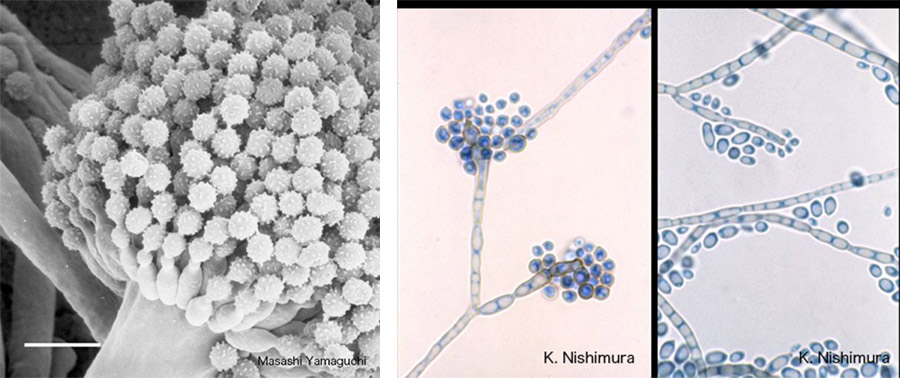
Exophiala is a type of black mold that grows in bathrooms. It also reminds me of an abstract painting by Paul Klee.
Please tell us about your institute, Medical Mycology Research Center (MMRC)
The MMRC at Chiba University has the largest collection of pathogenic molds in Japan. Other institutions that preserve molds include the Biological Resource Center of the National Institute of Technology and Evaluation (NBRC), which is under the jurisdiction of the Ministry of Economy, Trade and Industry. RIKEN also accommodates a similar facility, but its main focus is on useful molds. The MMRC primarily collects, preserve, and provides pathogenic molds.
The center works in collaboration with medical institutions across Japan, including Chiba University Hospital, to isolate microorganisms from patient specimens, identify and classify them as disease-causing organisms, and examine their drug susceptibility profiles (i.e., which drugs are effective). New mold species are sometimes discovered through these activities. Pathogenic bacteria collected from healthcare facilities are stored along with detailed mycological information and made available as research resources. These pathogens can be used for purposes such as elucidating mechanisms of infection, evaluating the efficacy of new drugs, exploring novel metabolites, and more.
The MMRC is indeed an important center for protecting our lives and health.
Lastly, please tell us about your future plans.
I am currently involved in a project led by a research group at Nagasaki University to study fungal skin diseases in Africa that are classified as Neglected Tropical Diseases (NTDs). This project involves collaboration with researchers from Sudan and Senegal. In many rural areas, people still work in fields barefoot or with sandals; thus, some develop fungal infections through their feet. Our role is to rapidly identify the causative fungi. We are now investigating a method to detect fungal pathogens directly from inflamed skin. The goal of this project is to transfer this technology to local healthcare settings so that these pathogens can be rapidly detected and effectively in clinical settings.
These days, the number of professionals who are skilled in working with fungi is decreasing in Japan. To address this issue, we are conducting workshops to pass on our skills to clinical laboratory technicians, internal medicine specialists, dermatologists, and students. Moving forward, we will continue our efforts to protect public health, while also placing greater emphasis on developing and nurturing the next generation of professionals in medical mycology.


